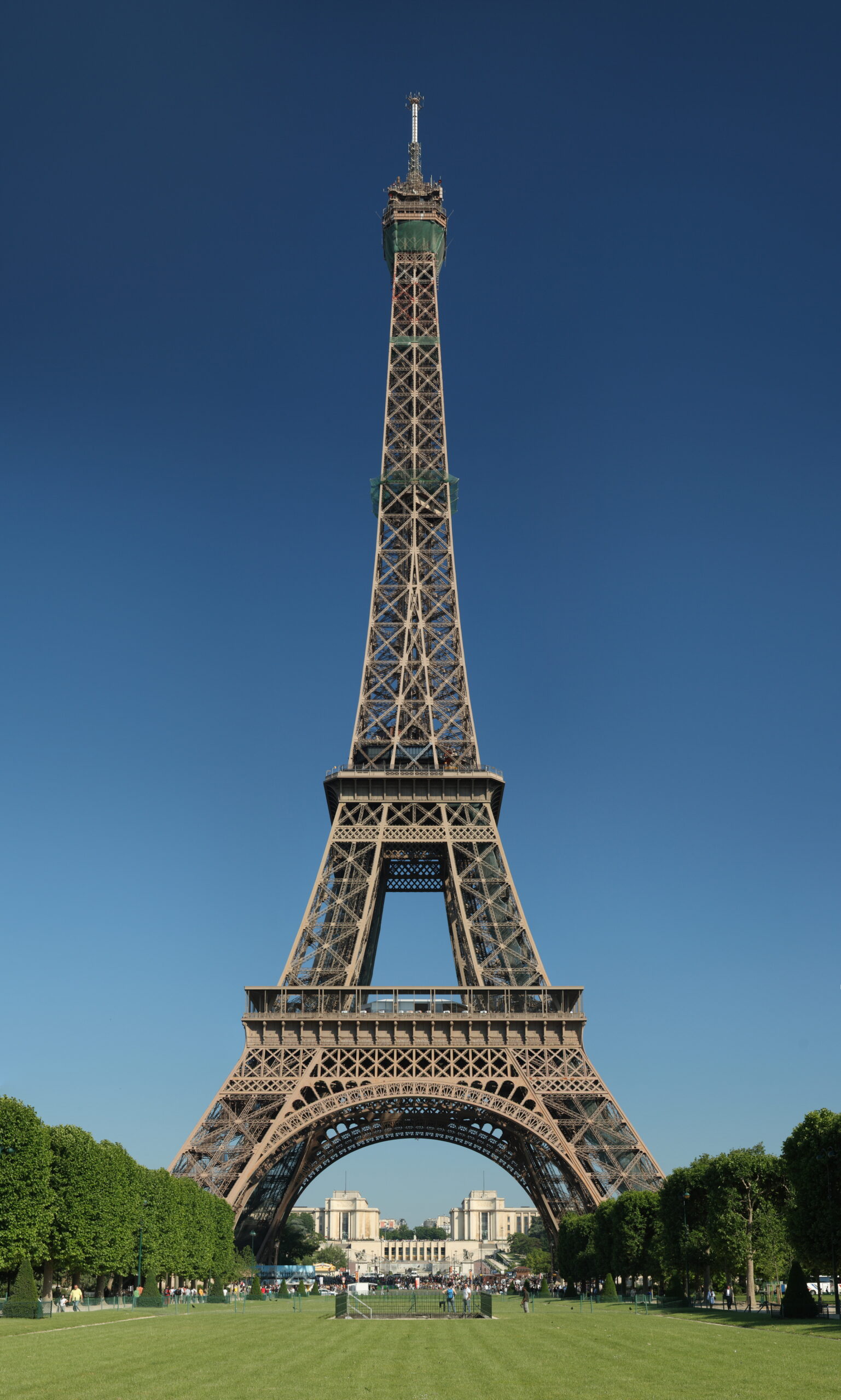The Eiffel Tower, standing proudly on the Champ de Mars in the heart of Paris, is not just an iconic landmark; it is a symbol of France’s cultural heritage and a testament to human ingenuity. Named after its designer, Gustave Eiffel, this towering structure has become synonymous with Paris and is recognized worldwide as an enduring emblem of elegance and engineering prowess.
Completed in 1889 as the entrance arch for the 1889 World’s Fair, held in Paris to celebrate the 100th anniversary of the French Revolution, the Eiffel Tower was initially met with a mix of excitement and controversy. Some criticized its unconventional design, while others saw it as a daring and innovative masterpiece. Over time, however, the tower has grown into one of the most visited and beloved attractions globally.
The Eiffel Tower stands at a staggering 324 meters (1,063 feet) and held the title of the tallest man-made structure in the world until the completion of the Chrysler Building in New York City in 1930. Comprising iron lattice work, the tower is a marvel of 19th-century engineering. Its intricate design features arches, curves, and lattice patterns that contribute to its visual allure.
A visit to the Eiffel Tower is a multisensory experience that begins with the approach to the Champ de Mars. As visitors get closer, the tower looms larger, its elegant silhouette dominating the Parisian skyline. The iron lattice, initially appearing delicate, reveals its robust construction upon closer inspection, and the play of light on its surface imparts a dynamic quality to the structure.
Upon reaching the base of the tower, visitors are greeted by the bustling atmosphere of the Champ de Mars and the opportunity to ascend the tower via elevators or a stairway, offering different perspectives on Paris at each level. The Eiffel Tower boasts three observation decks: the first at 57 meters, the second at 115 meters, and the third at 276 meters. Each level provides breathtaking panoramic views of Paris, with landmarks like the Louvre, Notre-Dame Cathedral, and Montmartre visible in the distance.
The Eiffel Tower’s observation decks are not merely vantage points; they are platforms for contemplation, romance, and celebration. As the sun sets, the City of Light comes alive with a dazzling display of twinkling lights on the Eiffel Tower itself, a nightly spectacle that captivates visitors and locals alike. The tower’s nightly illumination has become an integral part of its identity, casting a radiant glow over Paris and adding to the enchantment of the city.
Beyond its aesthetic appeal, the Eiffel Tower has played a significant role in historical events, scientific experiments, and cultural celebrations. Gustave Eiffel, along with a team of engineers, used the tower to conduct experiments in aerodynamics and meteorology. During World War I, the tower served as a strategic communication point, intercepting enemy radio signals. Today, it hosts cultural events, art installations, and festive occasions that draw people from around the world.
The Eiffel Tower is more than a structure; it is a living testament to the enduring spirit of Paris. It symbolizes elegance, innovation, and the timeless beauty of the city it calls home. As visitors ascend its heights, they are not merely climbing a tower; they are participating in a cultural pilgrimage, immersing themselves in the legacy and allure of one of the world’s most iconic landmarks.



